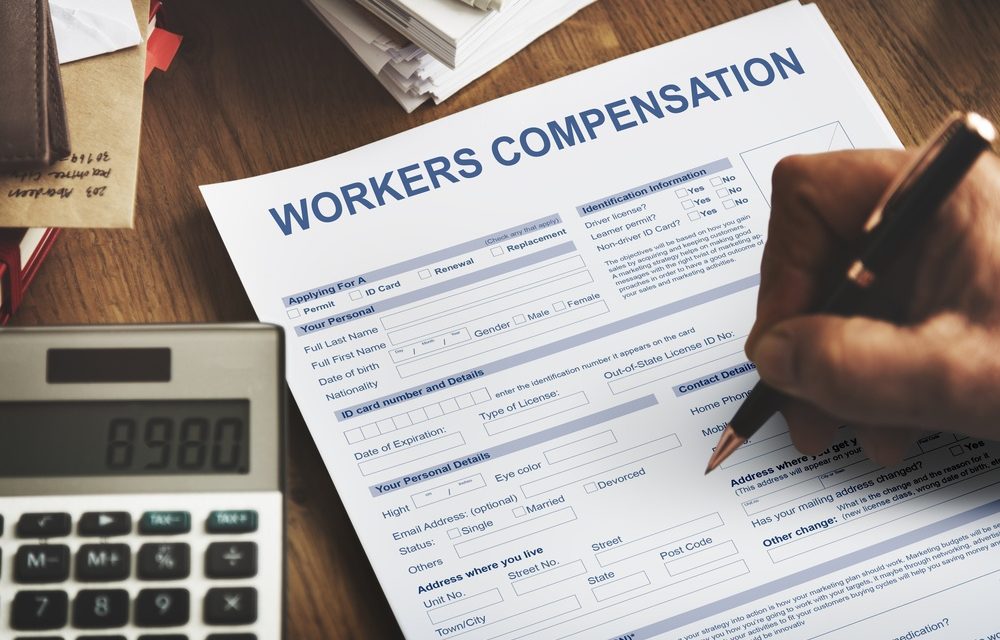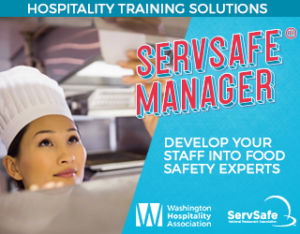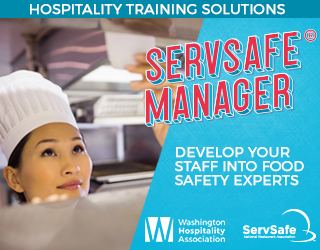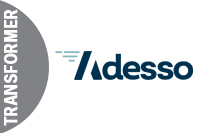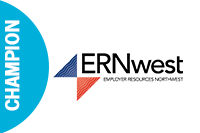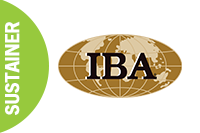What is workers’ compensation?
Workers’ compensation (industrial insurance) coverage protects both workers and employers from the financial impact of a work-related injury or occupational disease.
It pays for injured workers’ approved medical, hospital and related services that are essential to their treatment and recovery. An injured worker who is temporarily unable to work also receives partial wage replacement payments.
As an employer or prospective employer, you must provide workers’ compensation insurance coverage for your employees. Coverage is mandatory. In return, your employee ordinarily cannot sue you for damages when a work-related injury or illness occurs.
Employers purchase coverage through the Department of Labor & Industries (L&I). L&I manages all claims and pays benefits out of an insurance pool called the Washington State Fund. The fund is financed by premiums paid by employers and employees, not by general revenue taxes.
However, employers may qualify for self-insurance if they demonstrate they have sufficient financial stability, an effective accident prevention program, and an effective administrative organization for a workers’ compensation program.
Mandatory Coverage
Generally employers must provide workers’ compensation (industrial insurance) coverage for their employees and other eligible workers.
There are two ways to provide this coverage depending on the financial resources of your business. Most businesses participate in the state’s workers’ compensation program — the Washington State Fund. Companies with at least $25 million in assets, and some governmental entities, may qualify for self-insurance.
The Department of Labor & Industries, Insurance Services Division, manages the Washington State Fund. This fund derives its income solely from premiums paid by you and your employees. The fund receives no money from general tax revenues.
All Washington workers must be covered through the State Fund or by a certified self-insured employer, unless they are subject to an exclusion listed in the next section.
Excluded Employment
The information provided in this section is a summary. For a complete description of excluded employment, please see RCW 51.12.020.
Workers not covered
You are not required to provide coverage for the following employees. These are the only exclusions allowed:
- A domestic worker in a private home. However, if two or more are employed regularly for 40 or more hours each per week, all must be covered.
- A person employed to do gardening, maintenance, repair or similar work at an employer’s private home. This does not include an individual hired to do home improvements or upgrades.
- A person who is not a regular employee of the trade, business or profession of the employer and is not working at the employer’s private home. This exclusion refers to a person hired to perform a personal errand or chore that benefits the employer as an individual, but not the business. For example, a professional golfer would need to provide coverage for a golf caddy, but a recreational golfer would not.
- A person working only in return for aid or sustenance from a religious or charitable organization.
- A child under age 18 employed by a parent in agricultural activities on the family farm.
- A horse-racing jockey who is participating in a racing meet.
- An employee whose work activity is covered through the Federal Employees’ Compensation Act, Longshoremen’s and Harbor Workers’ Compensation Act, Jones Act, or Law Enforcement Officers and Fire Fighters Compensation Plan.
- Musicians or entertainers, if: Your primary business is other than entertainment; They don’t also work for your primary business; They don’t perform on a regular and ongoing basis for you. Example: A bar owner is not required to report a musician as long as the musician doesn’t also work in the bar when not performing and the contract is not regular and continuous (such as a long-term piano player at a piano bar).
- Newspaper carriers or vendors who distribute newspapers to residences, businesses, or on the street, and freelance journalists or photo journalists who are paid solely by piece work and use their own equipment.
- An insurance producer.
- A cosmetologist, beautician or barber who rents or leases booth space.
- A driver providing commercial transportation services as defined in RCW 48.177.005.
- For-hire vehicle operators who own or lease the for-hire vehicle, chauffeurs who own or lease the limousine, and operators of taxicabs who own or lease the taxicab.Business owners, partners, corporate officers and members/managers. Individuals who own and control any type of business are generally excluded from mandatory workers’ compensation coverage. However, there are limits on both the number of owners who can be excluded and the level of control required for exclusion. There are also special provisions for some family-run businesses. If you own and operate a business and have questions about your excluded status, please contact the Employer Services Help Line at 360.902.4817.
Optional (Elective) Coverage
Workers’ compensation coverage is available for some individuals excluded from mandatory coverage. This coverage is referred to as optional or “elective” coverage.
To apply for “elective” coverage, you must complete and return an Application for Elective Coverage. For more information, contact the Employer Services Help Line at 360.902.4817.
Student Volunteers, unpaid students and unpaid student interns
Businesses may elect optional “elective” coverage for their student volunteers in public and private K-12 and intuitions of higher education who are working without wages as part of a school program.
Business may elect optional “elective” coverage for unpaid students and unpaid student interns in a work-based school-sponsored program. For a complete description of student volunteers and unpaid students, please see RCW 51.12.170.
Note: Individuals who elect optional coverage are considered to be an employee of the business/company for purposes of workplace safety and health regulations under the Washington Industrial Safety & Health Act (WISHA).
Insuring Minors
Workers’ compensation laws protect virtually all employees, including minors (workers under 18 years of age). Even minors working for a parent in the family business are covered. The only exception is a minor working on a family farm.
Before you hire a minor employee, you must obtain a minor work permit endorsement on your Business License. You will also need to have a signed Parent/School Authorization form and proof of the minor’s age. Parent authorization is still required during non-school weeks.
In addition to the administrative requirements for hiring minors, you are responsible for knowing the limits on their hours of work and which specific work activities are prohibited. You can be assessed civil penalties or be subject to criminal penalties for violating child labor laws.
For more information:
- On the Web at wa.gov/TeenWorkers.
- Telephone: 360.902.5315 or 866.219.7321.
- Email: .
Paying premiums for out-of-state Washington workers
Premiums must be paid to L&I when you have Washington workers in another state or province
for fewer than 31 days in a calendar year. It does not matter if premiums are paid out of state or not. If your Washington workers are in another state for more than 30 days, then you may apply for out-of-state reporting if:
- There is no reciprocal agreement directing you to report these workers to Washington.
- You can prove you’re paying premiums for these workers to an out-of-state workers’ compensation insurer.
- Out-of-state reporting allows you to report out-of-state hours and wages without paying premiums to L&I.
If you are bringing out-of-state workers temporarily into Washington, you do not need to pay premiums to L&I if:
- There is a reciprocal agreement that assigns coverage to the worker’s home state.
- There is no reciprocal agreement, but you insure the worker for workers’ compensation in their home state and the work performed in Washington doesn’t require registration as a contractor or electrical license to perform.
Note: The home state insurer must be willing to cover all claims costs incurred in Washington. If not, you may be subject to premium assessment, penalties for not reporting, interest on unpaid premiums and a penalty of between 50% and 100% of the cost of a claim. Even if the home state insurer provides coverage, you could be held responsible for any benefits not offset by the out-of-state insurer and paid by L&I. You can always choose to cover your out-of-state workers in Washington while working temporarily in Washington, but L&I will not cover these workers while working out of state.
Employers bringing out-of-state workers temporarily into Washington, who are required to or choose to pay premiums in Washington, can apply for coverage at www.BLS.dor.wa.gov.
For more information, please see www.Lni.wa.gov/OutOfState or contact the Employer Services Help Line at 360.902.4817.
Independent Contractors
Generally, you are not required to provide coverage for independent contractors who are appropriately licensed to engage in business if the contract is outside your normal course of business.
Example: A restaurant owner hiring someone with current required licenses to provide architectural services to others does not need to report this work for workers’ compensation coverage.
Self-Insured Businesses
Employers with substantial resources (at least $25 million in assets) and an effective accident prevention program may qualify to provide workers’ compensation insurance coverage for their employees through self-insurance.
To qualify, an employer must meet certain criteria as outlined in Washington Administrative Code (WAC) 296-15-021.
A self-insured employer assumes all risks and costs of workers’ compensation coverage. Self-insured employers manage all aspects of their workers’ compensation claims, including authorizing benefits according to Title 51 RCW and paying all benefits out of company funds.
L&I must certify self-insured employers.
Reporting and recordkeeping for self-insured employers vary from those of employers covered by L&I.
If you are interested in applying for self-insurance, please see the Employers’ Guide to Self-Insurance in Washington State at www.Lni.wa.gov/IPUB/207-079-000.pdf.
For more information:
- On the Web at wa.gov/SelfInsurance.
- Telephone: 360.902.6861
Opening an Account
To obtain workers’ compensation coverage through the Washington State Fund, you must open an account by completing and returning a Business License Application. This form is available online at www.BLS.dor.wa.gov or from offices of the departments of Revenue, Employment Security or Labor & Industries, or from the Corporations Division in the Secretary of State’s Office in Olympia.
If you own an existing business and will be hiring employees, please re-file the Business License Application, indicating you are hiring. Once you open an account, you will be assigned an L&I account manager who can answer questions specific to your company.
Employer Classifications
The basic premium for your workers’ compensation coverage depends on the risk classification or classifications assigned to your business.
There are approximately 300 classifications. Each refers to a type, or several types, of business activity and has its own basic insurance rate. This rate reflects the risk of workplace injury or disease in the industry as a whole or industry activity.
Generally, it is the nature of business of the employer that is classified, not the separate occupations or operations of individual employees within the employer’s business.
When you apply for an industrial insurance account, State Fund underwriters will assign one or more risk classifications based on the nature of business described on your application.
If the classifications assigned to your business do not appear to be correct, or the nature of your business changes, a change in your risk classification may be required.
Example: If you are a painting contractor and you begin doing drywall work as well, a new risk classification will need to be assigned to your business.
To request a change, or for more information on employer risk classifications, contact the Employer Services Help Line at 360.902.4817.
Premium Rates
Soon after you open your workers’ compensation account with L&I, you will receive a Workers’
Compensation Rate Notice. You also will receive a new rate notice whenever L&I adjusts premium rates or when your individual experience factor rating is recalculated. This is usually mailed to you in December, with any changes effective Jan. 1.
This rate notice tells you the rate you will pay per worker-hour/unit for each risk classification assigned to your business. We refer to these hourly/unit rates as “composite rates” because they are a combination of four separate components: the accident fund, medical aid fund, Stay at Work program, and the supplemental pension fund. The rate notice also shows these four elements individually.
They work like this:
Accident-Fund premium. Only employers pay this premium. It provides money to pay nonmedical claim costs such as wage-replacement, most vocational services, permanent disability benefits and survivor benefits.
Medical-Aid premium. Employers and employees related services essential to an injured worker’s recovery, including some vocational services.
Stay-at-Work premium. Employers and employees pay this premium. It partially reimburses employers for wages and other expenses when they bring their injured workers back to light-duty or transitional jobs.
Supplemental-Pension assessment. Employers and employees pay this assessment. It provides cost-of-living increases to injured workers with extended disabilities. The Supplemental-Pension assessment is not experience rated.
Payroll Deduction
Under state law, a portion of the premium due, equal to one-half of the Medical Aid Fund rate, Stay at Work rate, and Supplemental Pension Fund assessment, may be paid by employee contribution.
L&I does not collect each worker’s share directly. Instead, employers have the option to collect their employees’ portion through payroll deductions. The maximum payroll deduction rate for each risk classification assigned to your business is shown on your rate notice. It is illegal to withhold more than the authorized amount.
Each pay period, calculate the amount you withhold by multiplying the payroll deduction rate (found on your Workers’ Compensation Rate Notice) times the actual number of hours/units each employee worked.
Some businesses choose not to make employee payroll deductions. These businesses are still responsible for paying the total premium due.
What is experience rating?
It is the result of your workers’ hours or units (exposure) and claims (losses) occurring during a period that we call the “experience period.” This result will affect your workers’ compensation premium rates for a calendar year.
Every eligible employer is experience rated on an annual basis. An eligible employer, as defined by Washington Administrative Code, is an employer who reported experience (worker hours or units) during a given experience period.
Businesses that have common majority ownership will be experience rated together on the same policy and share the experience factor.
In most cases, businesses that are sold and continue to perform the same operations in Washington will have their experience transferred to the new ownership.
What is the experience period?
The experience period is the oldest three of the four fiscal years preceding the effective date of premium rates. (Fiscal year = July 1 through June 30.) The premium rates are effective on Jan. 1 of each year.
L&I calculates your experience factor by comparing your workers’ compensation claim costs to the expected costs for companies having the same reported hours and risk classifications as your business. A business with an experience factor greater than 1.0 will be assessed accident fund, medical aid fund, and stay at work rates higher than the base rates. Businesses with factors lower than 1.0 will be assessed less than the accident fund, medical aid fund, and stay at work base rates.
New businesses start out with a factor of 1.0 until they become experience rated.
If an employer buys an existing business and continues to perform the same operations in Washington, in most cases the business’s existing experience rating will be transferred to the new owner (successor).
Claims with a date of injury (DOI) and worker hours/units reported within the experience period will be used in calculating the experience factor for a given calendar year.
How long will a claim affect my premium rates?
A claim will affect your experience rating and premium rates for three years. For example, a claim with a date of injury between July 1, 2014, and June 30, 2015 affects premiums for calendar years 2017, 2018 and 2019.
How do I know what my experience factor is?
The experience factor is printed on your Workers’ Compensation Rate Notice and on the L&I website under www.Lni.wa.gov/Verify. We determine your premium rates by multiplying your experience factor by the sum of the accident fund, medical aid fund and the Stay at Work base rates, then adding the supplemental pension fund assessment.
Reporting and Recordkeeping
How to File Quarterly Reports
The easiest way to file your Quarterly Report and pay your insurance premiums is at www.Lni.wa.gov/ClaimsIns/Insurance/File/Online. Online reporting automatically calculates premiums for you, limiting errors and miscalculations. If you do not have online access, please contact the Employer Services Help Line at 360.902.4817.
Watch the mail for your Rate Notice.
We will mail you a rate notice that shows your hourly premium rate for each risk classification. Like other types of insurance, this hourly rate is based on the risk of injury for that type of work or industry.
Keep careful payroll records.
Prepare by keeping accurate timesheets and payroll records, as required by law. In most cases, you will use your workers’ total work hours in order to calculate the premium you owe.
Note: If you have no worker hours/units to report, no premium is due. However, you must still file an online quarterly report marked “zero hours” or “no payroll.”
Get ready to calculate your L&I payroll deductions.
Employers are responsible for paying all premiums due. However, in Washington state, workers may also pay a share of the total hourly rate through payroll deduction. The exact amount is shown on your rate notice in the column “Employee Withholding.” You may deduct that hourly share from your workers’ pay.
Be prepared to complete your first Quarterly Report online and calculate the premium you owe.
You must file your Quarterly Report and pay your premiums each quarter, even if you have no employees or payroll hours to report.
You have two options for online filing: My L&I and QuickFile.
All online systems show the risk classification(s) and hourly rate(s) from your rate notice. To get started, go to www.Lni.wa.gov/ClaimsIns/Insurance/File/Online.
Note: For accountants, bookkeepers and payroll providers who file multiple quarterly reports, a Bulk Filing option is also available through My L&I. For more information, go to www.Lni.wa.gov/ClaimsIns/Insurance/File/Acctinstr or email to get started.
Submit your Quarterly Report and premium on time.
Quarterly Reports are due no later than the last day of the month that follows the end of the quarter. You will be charged a late fee for late filing.
Determining Reportable Worker Hours/Units
Generally, you should report the actual number of hours/units worked by your employees. Do not include sick-leave hours, vacations or holidays, even if it is paid leave. Report overtime work on a one-to-one basis, in other words, each hour of overtime work is reported as one hour, even though time-and-a-half wages may have been paid.
Exceptions to reporting actual number of hours worked include:
Salaried personnel. You may report salaried workers using either 160 assumed hours per month for each worker or report the actual hours worked, if a daily record of actual hours is kept for each worker. You must report all of your salaried workers using the same method (either assumed or actual hours), even if they work part-time. You must keep a record of the date each worker begins and ends employment. If you are using the 160-hour rule, you may report 8 hours per day for new or terminated workers who work a partial month at the beginning or end of their employment. No reduction to reportable hours can be made for vacation, holiday or sick leave when using the 160-hour rule.
Optional “elective” coverages. If your business provides optional coverage for an owner (sole proprietor, partner, exempt LLC member or manager, or corporate officer), you may report either 480 hours per quarter or actual hours, if a daily record of actual hours is kept. If you have optional coverage for other exempt workers, you must follow the reporting rules for salary, hourly, commission or piecework, as applicable.
Volunteers, student volunteers and unpaid students. Businesses who elect coverage for their volunteers, student volunteers or unpaid students with optional (elective) coverage may choose to report 100 hours per qualifying volunteer per calendar year, or actual hours.
Splitting Worker Hours
The worker hours of any one employee may be divided for reporting purposes between two or more assigned basic risk classifications. This may be done only when accurate records of actual hours worked, supported by original timecard or time-book entries, document the division of duties.
You may not divide a worker’s hours between a “basic” classification and a “standard exception” classification, or between two standard exception classes. Standard exceptions are clerical office (class 4904), auto/truck/camper/trailer/ mobile home/motorcycle and pleasure craft sales personnel (class 6301), outside sales (class 6303), LLC members/manager (class 7100), and corporate officers (class 7101).
If you do not keep accurate records of divided worker hours, all of a worker’s hours must be reported in the highest rated classification in which the worker has duties. Estimates or percentages are not acceptable documentation for splitting hours. Employers may reduce premium costs in cases where dividing a worker’s hours between risk classifications is allowable. If you are unsure if a division is allowed for a particular situation, please contact the Employer Services Help Line at 360.902.4817.
If You Fail to File Your Reports or Pay Premiums
If you fail to file a quarterly report, L&I will estimate the premiums due based on the best information we have available and we will take steps to collect the premiums owed.
We also assess penalties on delinquent accounts. The longer the account is delinquent, the greater the penalty.
The minimum penalty is $10. You must submit a report even if you report no hours/units. A late report indicating “no hours/units” will be assessed a $10 penalty.
Interest will be assessed on all delinquent accounts at a rate of 1% per month on the premium owed. We count the number of calendar days elapsed since the due date including the date we receive the report or payment.
Other penalties may be assessed for non-payment of premiums, misrepresentations, excessive deductions from employees, failure to keep adequate timesheets and payroll records or other violations.
Recordkeeping
State law requires every employer to keep records that will allow Labor & Industries to compute premiums. These records must be open for examination by L&I. Accurate, properly maintained records will help you manage your business and, in case of an audit, minimize the time needed for an accurate review.
To properly document hours reported on quarterly reports, maintain the following payroll and time records on each employee for at least three years:
- Employee name, address and Social Security number.
- Date hired (and terminated, if applicable).
- Job title and type of work performed.
- Type of compensation (hourly, salary, commission, etc.).
- Pay period.
- Actual hours worked each day.
- You must keep records of actual hours worked for workers paid on an hourly or piecework basis. The number of units earned or produced for piece workers must also be recorded.
- Keeping records of the actual hours that outside commissioned and salaried employees work is optional but a record of days worked is required if using the 8-hour per day premium option.
- If an employee is assigned to more than one risk classification, records of actual hours worked each day must also show how many hours the employee worked in each class.
- Gross pay.
- Deductions from earnings and the purpose of each deduction.
- Net pay.
- Check numbers of checks issued.
In addition to payroll and time records, the following tax records also need to be maintained for at least three years:
- Unemployment tax returns from the Employment Security Department.
- State excise tax returns from the Department of Revenue.
- Internal Revenue Service forms and tax returns. For example, W-2 statements, Form 941 (quarterly report), Form 1099 (miscellaneous income), Form 1065 (partnership return), Form 1040 (Schedule C).
Other records and information that may need to be referenced include:
- Check registers.
- Canceled checks.
- Cash disbursement journal (materials and supplies; miscellaneous contract labor).
- Corporation documents, articles of incorporation, bylaws, and minutes of meetings.
- Contracts, invoices, financial statements, worksheets maintained for industrial insurance reports, and subcontractor records, specifically the:
- Legal name.
- Registration or license number.
- UBI or L&I account ID number.
Accident Records
Keep complete records of all accidents, including minor ones. Even minor mishaps sometimes turn into injuries that require medical attention. Accident-related records you should keep are:
- The injured worker’s Report of Accident.
- The supervisor’s Report of Accident.
- Industrial insurance claim log.
- Claim date record.
- OSHA 300 log, if you have 10 or more employees at all times during the calendar year at all of your business locations combined.
Use these records for completing the Employer Report of Industrial Injury or Occupational Disease form or when resolving claim disputes.
Audits
L&I may audit your employment records. During an audit, an L&I auditor will inspect your business operations and examine records to verify that your workers’ payroll and hours have been reported accurately. An L&I auditor also will ensure that worker hours and claims associated with your account are in the appropriate risk classification.
Posting Requirements
Workers’ compensation laws and regulations that L&I enforces require employers to post the following information:
Certificate of coverage
You are required to obtain a certificate of insurance coverage and post it conspicuously in your place of business. You must have a separate certificate of coverage in each business location you operate. The certificate is issued when you open your account with L&I. You can obtain replacements by calling the L&I office nearest you or online at www.Lni.wa.gov/Verify .
Required posters
L&I will send you three posters that inform your employees of their rights and responsibilities as workers. They must be displayed where employees can see them. The required posters are:
- Notice to Employees – If a Job Injury Occurs (F242-191-909).
- Job Safety and Health Law (F416-081-909).
- Your Rights as a Worker (F700-074-909).
You can obtain free copies of these posters by calling any local L&I office or ordering online at www.Lni.wa.gov/RequiredPosters.
Employee Benefits
Employees are eligible for workers’ compensation benefits when a work-related injury or occupational illness occurs. Benefits also are paid if an employee is injured during a meal period at the job site, even though the person was not working at the time.
Benefits are not paid for intentional self-inflicted injuries or for injuries to an employee who is committing or attempting to commit a felony.
All benefit levels and the conditions for benefits are normally set by the state Legislature.
Types of Benefits
Medical services. If your employee’s claim is accepted, L&I pays for all approved health-care providers, hospital, surgical, pharmacy and other health-care services necessary for the treatment of your employee’s workplace injury or occupational disease.
Injured employees may select a health-care provider who is qualified to treat their injury or occupational disease.
Injured workers must get ongoing care from a medical provider who is part of the L&I Medical Provider Network. They may see a non-network provider for the initial visit, but for additional or ongoing care, they will need to transfer to a network provider.
Other services may include, but are not limited to, emergency ambulance service, special or home nursing care, dental repair, convalescent center care, crutches, braces, artificial limbs, glasses and hearing aids.
Some automobile and home modification costs are covered for employees suffering amputation or paralysis. These employees also receive lifetime prosthesis maintenance, including replacements needed because of normal wear-and-tear of the prosthesis or related physical changes.
Travel expenses. L&I can reimburse pre-approved out-of-pocket travel expenses when the injured worker must travel more than 15 miles from his or her home to receive adequate health care services, vocational training or fitting for a prosthetic device.
Time-loss compensation payments (wage replacement benefits). Employees receive a percentage of their regular wages if they are unable to work because of a work-related injury or illness. These are known as time-loss compensation payments.
The employee is not paid for the day of injury. Benefits are not paid for the first three calendar
days following the injury unless he or she is unable to work for a period of 14 or more consecutive calendar days from the date of injury. An unsuccessful attempt to return to work within the 14 day period will not affect eligibility for payment for the first three days following the day of injury.
If the employee becomes disabled later than three days after an injury, time-loss compensation payments begin on the first day he or she is unable to work.
Time-loss compensation payments range from 60 percent to 75 percent of the injured worker’s gross wage depending upon the worker’s marital status and number of children at the time of injury.
These benefits cannot exceed 120 percent of the state’s average wage. (The state’s average wage varies; it is established by the Employment Security Department on July 1 of each year.)
Stay at Work Program. Stay at Work is a financial incentive program that encourages employers to bring their injured workers quickly and safely back to light-duty or transitional work by reimbursing them for a portion of their costs. Eligible employers can be reimbursed for 50 percent of the base wages they pay for light duty (up to 66 days/$10,000), plus many expenses.
The purpose of this incentive is to encourage more employers to return their injured workers to medically approved light duty or transitional work with the doctor’s approval. This best practice can help workers recover and reduce costs for employers.
For more information, visit www.Lni.wa.gov/StayAtWork.
Vocational rehabilitation. Injured employees who are unemployable in their prior vocation because of their work-related injuries may qualify for vocational rehabilitation services.
If appropriate, an injured worker will be referred to a vocational provider for return-to-work assistance.
Vocational retraining benefits may be appropriate for your injured worker. Retraining may include on-the-job training or a formal vocational program.
Other return-to-work help. L&I can contribute up to $5,000 to help you modify a job to fit an injured employee’s abilities.
Permanent partial disability awards. If your employee’s work-related injury or occupational disease caused permanent loss of bodily function, he or she will receive a permanent partial disability award in an amount established by the Legislature.
Pension awards. A monthly pension for life is granted to an employee whose injury or illness results in permanent inability to work, based on medical and vocational reports.
Pensions also are granted if the accident results in the loss of both legs, both arms, or the loss of a leg and an arm, total loss of eyesight or paralysis. Pension benefits are referred to as permanent total disability (PTD) awards.
Previously paid permanent partial disability awards reduce an employee’s pension benefit amount. Adjustments in pension benefits are also made when the disabled employee chooses to leave a benefit for their spouse and children upon death.
Survivor benefits. The surviving spouse and legally dependent children receive a monthly pension if a work-related injury or occupational illness results in an employee’s death.
The amount they receive is based on the formula used for setting time-loss compensation payments. In addition, survivors receive an immediate cash payment of 100 percent of the state’s average monthly wage in effect on the date of injury, plus funeral expenses of up to 200 percent of the state’s average monthly wage in effect on the date of death. The state’s average wage changes each July 1.
If the surviving spouse remarries, he or she may choose either a final cash settlement or the right to resume monthly pension payments if the marriage is terminated.
Even if the surviving spouse remarries, the employee’s dependent children continue to receive monthly benefits while they are dependent, typically until age 18 or, if they are still in school, until age 23.
If the deceased was a member of the Law Enforcement Officers’ and Firefighters’ retirement
system or the State Patrol retirement system, the surviving spouse may be eligible for further benefits through the Department of Retirement Systems (DRS). For more information, contact DRS at 800.547.6657.
Structured Settlement Agreements. A Structured Settlement Agreement is an agreement between a worker, the employer, and L&I to resolve a claim. The agreement generally resolves all future benefits except medical. Workers are still eligible to receive medical treatment for conditions allowed on their claim and can file a future claim if a new injury occurs.
In most structured settlements, the claim is closed. The worker is paid a set amount in periodic payments, which are spelled out in the agreement.
To be eligible, an injured worker must:
- Be 50 years of age or older.
- Have an allowed workers’ compensation claim in Washington.
- Wait at least 180 days after L&I or the self-insured employer received the claim.
Employers may initiate structured settlement discussions for an eligible worker’s claim by filing an application with L&I. However, structured settlement is a voluntary program, and all parties must agree. L&I negotiates the amount to be paid and submits the agreement to the Board of Industrial Insurance Appeals.
For more information or to initiate structured settlement discussions, please visit www.Lni.wa.gov/Settlement.
Gross Income
When calculating an employee’s benefits, L&I will first establish the employee’s gross income at the time of the injury. L&I will issue a “wage order” providing the employee and you with the information that was used to calculate the employee’s gross monthly income.
NOTE: If your employee has an occupational disease, gross income is based on the date the employee’s condition first required medical treatment or became disabling, whichever came first.
The following are used to calculate gross monthly income:
- Gross wages earned before taxes, including income from a second job.
- Employer-provided medical, dental and vision benefits.
- The reasonable value of room and board, housing, fuel or similar considerations received from the employer as part of the employee’s income.
- Any bonus the worker received within the 12 months immediately preceding the injury as a part of the contract of hire with the employer of injury.
- Tips reported by the employer for federal income tax purposes.
- Normally worked overtime hours are included.
If your employee’s work pattern is determined to be exclusively seasonal, essentially part-time or intermittent, his/her gross monthly income would be determined by averaging the total wages earned, including overtime pay and tips, from all employment in any 12 successive calendar months preceding the injury that most fairly represents the employee’s employment pattern.
If an Injury or Illness Occurs
Filing an Accident Report
If a job-related injury or illness occurs, you and your employees have certain legal responsibilities.
What the injured worker must do
- Report the injury or exposure and how it happened to a supervisor as soon as possible. Even minor injuries should be reported, but failure to report will not cause rejection of a claim.
- If medical attention is required, tell the treating health-care provider the injury is job-related. The provider will help the worker complete a Report of Accident(Workplace Injury, Accident or Occupational Disease), which begins the claim process. This form, also called Report of Accident or ROA, must be filed with L&I within one year of the date of injury.
- File a claim online at wa.gov/FileFastto expedite the process, or by phone at 877.561.FILE (3453). Answer all questions on the worker’s section of the Report of Accident to avoid a possible delay in benefit payments.
- For occupational diseases or illnesses, such as carpal tunnel syndrome, noise-induced hearing loss, occupational dermatitis and occupational asthma, the Report of Accident (Workplace Injury, Accident or Occupational Disease) must be filed within two years of receiving written notice from a doctor that the condition exists and is work-related.
What the attending health-care provider must do
- The attending health-care provider also fills in a section of the Report of Accident. The provider must supply information such as the diagnosis and treatment given and provide an estimate of how many days your employee will be unable to work. Attending providers are responsible for submitting the Report of Accident to L&I.
- Upon receiving the Report of Accident, L&I mails a letter and Employer Report of Industrial Injury or Occupational Disease form to you. It serves as your official notice that a claim for benefits has been filed by one of your employees.
What the employer must do
- Make sure your employee immediately obtains required medical care from the doctor or hospital of his or her choice. Injured workers must choose a health-care provider who is part of the L&I Medical Provider Network.
They may see a non-network provider for the initial visit, but for additional or ongoing care, they will need to transfer to a network provider. You can help your employee find a network provider in our online directory at www.Lni.wa.gov/FindaDoc.
Note: Out-of-state providers are not required to be in the network.
- Provide transportation or emergency ambulance service, if needed. L&I will reimburse for these transportation costs upon written request.
- A workplace fatality or in-patient hospitalization of any employee must be reported to L&I within eight hours of the incident. Any non-hospitalized amputation or loss of an eye(s) must be reported within 24 hours of the incident.
Note: This applies to all employers with workers working in Washington no matter what industry they work in and regardless of workers’ compensation coverage. You must report by calling L&I at 800.423.7233 or by visiting your local L&I office. Please see www.Lni.wa.gov/Safety for further details and information you need to include when reporting.
- When you receive a request for employer information from L&I, including your copy of the Report of Accident, complete and return the information as soon as possible. You may do this online at wa.gov/FileFastto expedite the process.
- Please answer all questions completely. If you notice errors in the information reported, provide corrected information. We must have accurate wage and certain benefit information because it is used to calculate time-loss compensation benefits for the injured employee. Verify your employee’s information, such as gross wages and hours worked.
- If you question the validity of the claim, state it on the form and explain your reasons why. This will help minimize invalid claims.
- If someone not employed by you caused the accident, you should indicate this on the form. It is to your advantage to document the case and provide complete records of facts and all evidence surrounding the accident.
Get Involved in Your Claims
Workers’ compensation claims affect your rates. You can take steps to control claim costs and affect your future premiums.
Use the Online Claim and Account Center (CAC)
CAC allows you to see information as soon as it comes into the claim file. By staying current, you can respond quickly to new information. Follow your claims, access your account and find more information at www.Lni.wa.gov/ClaimInfo.
Go Paperless! Get your claims correspondence online
Get correspondence right away instead of waiting for it to arrive in the mail. Online correspondence means no envelopes to open, no letters to sort, and nothing to shred — saving you time and resources. Quickly filter down to messages where action is required of you, search by keyword such as “claim allowed,” sort by injured worker name, and even respond by secure message with a single click! Find more information and sign up at www.Lni.wa.gov/eCorr.
Stay in touch with your employee
Call your employee right away to share your concern about the injury. Do what you can to get him or her back to work as soon as possible.
Provide light-duty work
The health-care provider may limit work activities or reduce the number of hours your employee can work during recovery. Offering light-duty within those restrictions will get your employee back to work faster and reduce claim costs. For help in developing light-duty work, contact a Return-to-Work Specialist at your local L&I office.
Consider “Stay at Work” Program
L&I’s Stay at Work Program is a financial incentive program that encourages employers to bring their injured workers quickly and safely back to medically approved light duty or transitional work by reimbursing them for a portion of their costs. This best practice can help the worker recover faster and reduce costs for employers. Eligible employers can be reimbursed for 50 percent of the base wages they pay to the injured worker (up to 66 days/$10,000) and for some of the cost of training, tools or clothing the worker will need to do the light-duty or transitional work.
Why consider Stay at Work?
- It may reduce your per-claim costs.
- It does help injured workers recover.
- It can help retain valuable employees and increases workplace morale.
- We’ve made it easy for you to apply. Learn more at wa.gov/StayatWorkor call 866.406.2482.
L&I’s Early Return to Work Program
The Early Return to Work (ERTW) Program encourages return to work options much earlier in the claims process, to everyone’s benefit. And if you are able to create a light-duty job for the still-recovering workers, the Stay at Work Program could reimburse you for half the wages and some related expenses.
Keep your employee on salary (KOS)
You can choose to pay the full amount of usual wages and benefits to your employee while he or she is off work due to the injury. When you use KOS, L&I doesn’t pay time-loss benefits. KOS will not prevent a ruling of Permanent Partial Disability (PPD), which will impact your rates similarly to time loss. To find out if KOS will benefit your company, contact your account manager or Risk Management Consultant. He or she will review your claim history and premiums and discuss how KOS can affect your future rates.
Available Resources for Employers
L&I provides, free of charge, these consultation services available before (and after) and injury occurs:
- A Risk Management Consultant who can show you how a workers’ compensation claim affects your company’s “experience factor” and premiums so that you are aware of the potential costs of an injury.
- A Safety or Health Consultant who can provide an onsite consultation to identify hazards and show you the safety steps to prevent injuries.
To request a safety or risk management consultation, go to www.Lni.wa.gov/SafetyConsultants or contact the L&I office nearest you. You can take advantage of specific Early Return to Work services that may include:
- L&I staff located around the state who can work with you, free of charge, to help bring your employee back to work quickly and safely.
- Job modification funds to help you cover the costs of modifying a workstation to allow an injured worker to return to work.
To learn more about L&I’s Early Return to Work Program, go to www.Lni.wa.gov and type “Early Return to Work” in the search box or call the nearest L&I office and ask for an Early Return to Work specialist.
Know Your Protest and Appeal Rights
L&I will send legal decisions to you. If you disagree with a decision or believe it’s incorrect, you must send a written protest or appeal before the deadline specified in the decision. Once the deadline has passed, L&I can’t change the decision, even if it’s wrong.
Monitoring claim costs is important because L&I uses these costs in computing your premium.
When L&I allows or closes your employee’s claim, we will send you the decision (also called an “order”). All correspondence and other documents about the claim, including from the claim manager and medical provider, are available online through the Claim and Account Center at www.Lni.wa.gov/ClaimInfo.
By routinely checking these reports, you can stay informed of injury costs charged to your account. You can monitor your employee’s progress and correct any information related to time-loss benefits or medical benefits, or medical costs.
Discrimination Against Workers
The law prohibits you from discriminating against employees in any way for exercising their rights under the workers’ compensation law or for filing a complaint about workplace safety. However, it does not prevent you from taking action against an employee for unsafe work practices. Find more information online at www.Lni.wa.gov/WorkplaceRights/ComplainDiscrim.
Financial Protections for Employers
Protection against “second injury” risks
There are special situations, called “second injury claims,” in which certain claim costs are not charged to you and do not affect your experience rating. Instead, these claim costs are paid from the Second Injury Fund, which was created to encourage employers to hire previously disabled workers. It protects you against certain financial risks should such workers suffer further injury after you hire them. The Second Injury Fund comes to your aid in these ways:
- Relief of certain pension costs. If a worker’s death or permanent total disability is caused by the combined effect of a previous disability and a new occupational injury, and not by the injury alone, all claim costs not directly related to the new injury will be paid out of the Second Injury Fund. Only those claim costs directly related to the new occupational injury will go on your accident experience record.
- Relief of all claim costs. The Second Injury Fund also is used to pay all claim costs arising from a preferred worker claim.
- Job modification costs. Second Injury Funds may be used to modify a job to allow an injured worker to return to work within their restrictions. Modification may be achieved using adjustments and job restructuring or through tools, equipment or appliances, up to $5,000 per job.
Protection against catastrophic accidents
Washington’s workers’ compensation system protects employers against massive losses that can result from a major catastrophic accident. If a single accident kills or permanently disables three or more workers, the employer’s accident experience record is charged for the cost of only two single pension claims — each equal to the average of all pension claims resulting from that catastrophic accident.
Worker recourse for injuries caused by a third party
If one of your workers suffers a job-related injury or occupational disease, he or she cannot ordinarily sue for damages. However, the injured worker may take legal action to recover damages if someone not in your employ — a “third party” — was responsible for the injury.
Third-party actions involve negligence on the part of someone not working for you. For example:
- The driver of a vehicle that hit the worker.
- The manufacturer of a defective product that injured the worker.
- A property owner who failed to properly maintain the premises.
- The owner of an animal that bit the worker.
How does third-party action benefit you, the employer? Successful third-party action benefits you because the amount recovered can be credited to your workers’ compensation insurance account, reducing the effect the claim has on your experience rating.
Keep in mind the following points about third-party action. If you have questions, contact the Third Party Section at 360.902.5100.
- The injured worker may initiate a third-party action or L&I may, if the worker chooses not to do so. The employer cannot initiate this action.
- The injured worker continues to receive workers’ compensation benefits while he/she or L&I pursues legal action.
- L&I approval is required for any settlement that doesn’t cover the costs of the claim.
- If the injured worker receives a financial settlement and has funds remaining after repaying claim costs, his/her workers’ compensation benefits would stop. Benefits might resume in the future depending on the amount of the remaining recovery and how long the worker is unable to work or continues to receive medical care.
Preferred Worker Program
Under the Preferred Worker Program, you can hire qualified employees who previously have been injured and receive the following financial benefits:
- Premiums waived. You are exempt from paying premiums on the worker for up to three years after you initially hire him or her. (However, you and the worker must pay the supplemental-pension assessment.)
- No injury costs. No claim costs will be charged against your account if the worker is injured on the job within three years of becoming a preferred worker.
Prevent Injuries and Control Your Costs
Preventing an injury or illness is the most effective way to protect your employees and limit the financial impacts of workers’ compensation claims. You can also take other steps to manage a claim, if one occurs, to help reduce claims-related costs.
Focus on Safety
Know the Safety and Health Rules for Your Workplace
L&I’s Division of Occupational Safety and Health (DOSH) is responsible for developing and enforcing workplace safety and health rules. Go to www.Lni.wa.gov/Safety or call 800.423.7233 for information on safety and health, rules, policies, sample safety programs and general assistance.
Your compliance with these rules helps you protect your employees from workplace hazards.
Here are two examples:
Rule Example 1: You are required to identify the hazards in your workplace and develop and maintain a written accident prevention program (APP) tailored to the hazards of your specific workplace. To learn more about developing an APP, visit www.Lni.wa.gov/Safety/Topics/AtoZ/APP, call the L&I office nearest you or call 800.423.7233.
Rule Example 2: You must make sure that first aid personnel are available to provide quick and effective first aid. In the absence of a clinic or hospital in near proximity to the workplace, which can be used for the treatment of all injured employees, you must train one or more persons to provide first aid. First aid kits must also be available in the workplace.
For information on first-aid training classes, you can contact the American Red Cross, Evergreen Safety Council or your local fire department, hospital or community college.
Training tools and other resources
At the “Safety & Health” section of L&I’s website, you’ll find training tools, online videos and educational materials to help you create and maintain a safe and healthy workplace. Visit www.Lni.wa.gov/Safety for more information.
Request a no-fee safety or health consultation
Do you know the safety and health requirements that apply to your business? If you’re not sure, you may want to request a safety or health consultation from L&I. A consultant — not an inspector — will meet with you and conduct a no-fee, confidential walkthrough survey of your work site to identify hazards and recommend remedies. You must correct in a timely manner any serious hazards found during the consultation, but the consultant will not issue a citation or fine you.
The goal of a consultation is to help you self-monitor your work environment so you can recognize hazards and fix them before accidents occur. If you comply with safety and health rules, your employees will be better protected than if you simply tell them, “Be careful.”
To request a no-fee consultation, visit www.Lni.wa.gov/SafetyConsultants or call the L&I office nearest you and ask to speak to the Consultation Manager. In addition to safety and health consultations, specialists in ergonomics and risk management are available to assist employers.
Send the right message to your employees
Make your commitment to safety clear to your employees. Take positive steps to build a safety “culture.” And don’t tolerate behavior that disregards safety and health rules and safe work practices. Positive steps you can take include:
- Develop a written safety and health program and share it with employees. A program communicates your commitment to safety and health and defines what is expected of workers.
- Encourage employees to come forward with safety or health concerns. Employees are often the best source of ideas for making changes that reduce workplace hazards.
- Empower your safety committee and hold regular meetings.
- Discuss safety in your orientation for new employees.
- Provide the training employees need to do new jobs or tasks safely.
Visit the Safety & Health section of L&I’s website to learn more about the safety and health services available to employers: www.Lni.wa.gov/Safety. These services include online training programs, publications, a video library and other training aids to help you build a strong safety culture.
Manage Claims
Prevention through safety is the best defense against the emotional costs of a workplace injury and the financial impact of a workers’ compensation claim. However, you should have a system in place to manage a claim, if an injury does occur. At a minimum, this system should include:
- Investigate any accident or “near miss.” The purpose is not to fix blame or deny benefits to anyone injured, but to determine what steps can be taken to avoid such incidents in the future.
- Monitor claims consistently by assigning one person to handle them. You will want to keep track of important dates and deadlines for protests or appeals.
- Get involved in your employees’ claims.
- Learn about and take advantage of return-to-work strategies. The goal is to get an injured worker back to work as soon as possible. For example, some workers can carry out different tasks or work part-time until they are fully recovered.
For more information about managing claims effectively, contact the L&I office nearest you and ask to speak to a risk management specialist.
Consider Retrospective Rating
If you are committed to operating a safe workplace, preventing accidents and managing workers’ compensation claims effectively, you may be interested in L&I’s Retrospective Rating Program (RETRO).
RETRO is an optional financial incentive program offered by Labor & Industries to help qualifying employers reduce their workers’ compensation costs. Employers can enroll on their own or in a group plan sponsored by a trade association or professional organization. Employers may receive premium refunds or they may be assessed additional premium based on their performance. Enrollment in this program occurs four times each year. Coverage runs for one year, beginning Jan. 1, April 1, July 1 or October 1. Learn more at www.Lni.wa.gov/Retro or call 360.902.4851 or email to .
If You Disagree with an L&I Decision
L&I makes many decisions that may affect your business, such as audit findings or actions on industrial insurance claims. You have the right to protest or appeal any decision and you must follow certain legal procedures to protect your rights. You may either protest/request a reconsideration or appeal. The information below provides general guidance. Every order issued by L&I should contain a notice of your appeal rights. Please be sure to follow the information on your order if you wish to preserve your right to appeal.
Protest/Reconsideration
If you disagree with a decision, you must send a letter to L&I protesting or requesting reconsideration of the ruling. Explain why you think it is incorrect and provide any information
L&I should consider before making a further decision. Please be specific. If L&I’s decision is in the form of a “Notice and Order of Assessment,” you must submit your request within 30 days of the day you receive the notice. For all other decisions of the department, you have 60 days in which to submit your requests. If you write us within the appropriate time period after receiving a legal “Notice and Order,” the law requires us to respond to your protest with another written decision. This may either change or reaffirm our earlier ruling. If you disagree with the second decision, you may appeal in writing to the Board of Industrial Insurance Appeals in Olympia.
Appeal
You may appeal an L&I decision to the Board of Industrial Insurance Appeals. The Board of Industrial Insurance Appeals is separate and independent from L&I. It is a quasi-judicial agency that conducts hearings when workers’ compensation issues cannot be resolved at L&I to the satisfaction of you, your employee or L&I. For complete information, please go to www.biia.wa.gov for a copy of the booklet, “Your Right to Be Heard,” or call 360.753.6823.
Additional information on firm appeals is available at www.Lni.wa.gov/ClaimsIns/Insurance/RatesRisk/Appeal.
Reference:
Employers’ Guide to Workers’ Compensation Insurance in Washington State F101-002-000
If you have any further questions about this topic or others, see the Department of Labor & Industries’ Help for Small Business page at http://www.lni.wa.gov/Main/SmallBusiness/.
Rev. 1/1/18
This article is an excerpt from the Handbook for Excellent Restaurant Operations (HERO), published by the Washington Hospitality Association. Want a hard copy of the whole manual? It’s one of the many benefits of becoming a member! Find out more about joining the Hospitality Association here.




